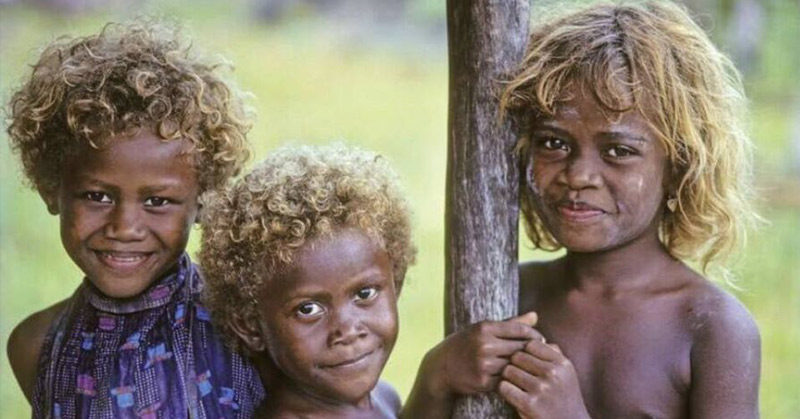Scientists are constantly learning about our history as a species. Sometimes, these new discoveries change everything we thought about a specific population. In 2016, scientists found DNA not linked to any known human ancestor. This suggests that at some point in history, there may have been another group of hominids that we didn’t know existed.
DNA Not Linked to Known Human Ancestor
At the annual meeting of the American Society of Human Genetics in October 2016, Ryan Bohlender reported that people from Melanesia may carry evidence of a previously unknown extinct hominid species.
Many scientists believe that our early ancestors migrated out of Africa between one hundred thousand and sixty thousand years ago. It was then that they first made contact with another hominid species in Eurasia- the Neanderthals.
For this reason, Europeans and Asians today carry genetic variations of Neanderthal DNA in their genomes.
There was another type of hominid, however, that our ancestors appear to have come into contact with. These were the distant cousins of the Neanderthals, the Denisovans. The problem is that we don’t have a very robust fossil record of the Denisovans. In fact, all we have is one finger bone and a couple of teeth. This makes it harder to determine our ancestral relationship with that species of humans [1].
To complicate things further, Bohlender and his colleagues have determined that there are traces of a third species of humans hiding in modern people’s DNA.
The people in question come from Melanesia, which is a region in the South Pacific that includes Papua New Guinea and the surrounding islands. They appear to have DNA not linked to any known human ancestor.
“We’re missing a population or we’re misunderstanding something about the relationships,” Bohlender said.
Read: 90,000-year-old human hybrid found in ancient cave
Our Genetic Link to the Past
To recap, scientists, are aware of two extinct species of humans that our ancestors interacted with: Neanderthals and Denisovans.
According to Bohlender’s calculations, people of European descent have no Denisovan ancestry. People in China have about 0.1 percent. People in Papua New Guinea get about 2.74 percent of their DNA from Neanderthals.
While other researchers have estimated that Melanesians get about three to six percent of their DNA from Denisovans, Bohlender believes that number is only about 1.11 percent. Instead, they seem to have DNA not linked to any known human ancestor.
This brought them to the conclusion that a third group of hominids may have bred with the ancestors of the Melanesian people.
“Human history is a lot more complicated than we thought it was,” he told Science News [3].
A separate study by researchers from the Natural History Museum of Denmark supported Bohlender’s conclusions. These researchers analysed DNA from 83 Aboriginal Australians and 25 others from the Papua New Guinea highlands. This genetic study indicated that they were the oldest continuous civilisation on earth, with heir origins dating back more than fifty thousand years.
The results of the study also revealed that their DNA was similar to that of the Denisovans, but different enough that it could be from a third, previously unknown hominid. About four percent of their genome appears to come from this unidentified species [4].
Many Unanswered Questions
Finding DNA not linked to any known human ancestor is exciting, but also creates a lot of questions.
Because we have such a small amount of fossil evidence from the Denisovan species, scientists don’t know how genetically diverse they were. For this reason, the discrepancy in the Melanesian DNA may not be from a third species at all. It may simply be a different branch of Denisovans.
This is the opinion of statistical geneticist Elizabeth Blue of the University of Washington in Seattle. Scientists have only found Denisovan remains in a single cave in Siberia. She says it is possible, then, that some of the population separated long enough to look like distinct groups, similarly to the way Europeans and Asians differ today. This different group could be responsible for the genetic variation in Melanesians today.
Mattias Jakobsson is an evolutionary geneticist at Uppsala University in Sweden. He says he wouldn’t be surprised if there were other groups of extinct hominids that came into contact with humans.
“Modern humans and archaic humans have met many times and had many children together,” he said [2].
As researchers continue to dig into our past, we will hopefully continue to unravel the complicated history of our species.
- https://www.sciencealert.com/pacific-islanders-appear-to-be-carrying-the-dna-of-an-unknown-human-species
- https://www.sciencenews.org/article/dna-data-offer-evidence-unknown-extinct-human-relative
- https://www.sciencealert.com/genetic-study-confirms-that-indigenous-australians-are-the-most-ancient-civilisation-on-earth

